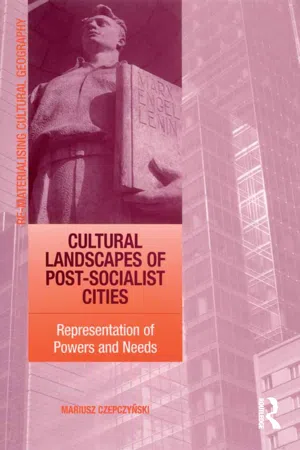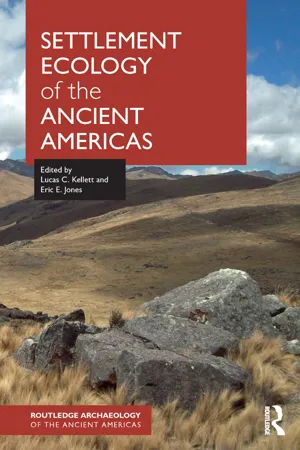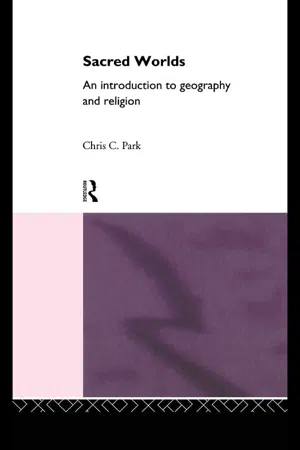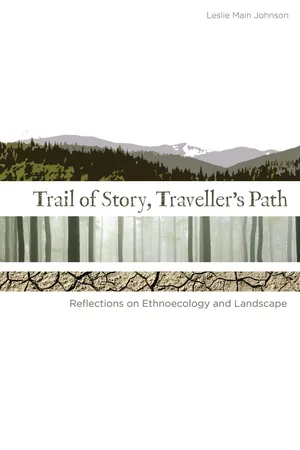Geography
Cultural Patterns
Cultural patterns refer to the shared behaviors, beliefs, and customs within a society or group of people. These patterns are shaped by factors such as history, religion, language, and traditions, and they influence how individuals interact with their environment and with each other. Understanding cultural patterns is essential in geography as they play a significant role in shaping the human landscape and influencing spatial relationships.
Written by Perlego with AI-assistance
Related key terms
6 Key excerpts on "Cultural Patterns"
- eBook - ePub
Cultural Landscapes of Post-Socialist Cities
Representation of Powers and Needs
- Mariusz Czepczynski(Author)
- 2016(Publication Date)
- Routledge(Publisher)
New cultural geography can then be defined as the study of geographical aspects of human culture as processes and practices of meanings; all possible aspects of different spatial and thematic levels. Based on new and more vibrant and interactive understanding of culture grew humanistic geography or the geography of representations, as a newer aspect of cultural geography, where cultural space is wrought on the basis of representation. On this context cultural space is a space of belief in common values structures by ideas or ideologies (see Mitchell 2001, Marcus 2000, Crang 2004). Cosgrove and Jackson’s (1987) concept of new cultural geography was raised from criticism of the Berkeley school based on its narrow focus on physical artefacts, as well as a unitary view of culture rather than a constantly negotiated and constituted plurality of cultures. They also argued for a more complex concept of landscape, recognizing it as a cultural construction, a ‘particular way of composing, structuring and giving meaning to an external world whose history has to be understood in relation to the material appropriation of land’ (Cosgrove and Jackson 1987, 96). Landscape has been seen as a social and physical construction, where symbolic and represented landscapes produced and sustained social meanings, visualized in physical forms. In the pursuit of such analyses of landscapes, they highlighted the usefulness of two metaphors: landscape as text and landscape as theatre (see Cosgrove 1998, Cosgrove and Daniels 2004, Kong 2007). Cosgrove and Jackson’s (1987) vision for contemporary cultural geography is multi-level and holistic. It would, moreover, assert the centrality of culture in human affairs - eBook - ePub
- Lucas C. Kellett, Eric Jones(Authors)
- 2016(Publication Date)
- Routledge(Publisher)
why particular settlement patterns are established and what caused them to change over space and time.Defining settlement archaeology
In the simplest of terms, settlement archaeology is the study of settlement patterns. But how do we define a settlement pattern, and more importantly what does it signify to archaeologists about past cultures and their behaviors? Fish offers a useful definition of a settlement pattern:a settlement pattern is a set of culturally significant locations, each of which occupies a specified position within an array that makes up a coherent distribution … settlement patterns are spatial matrices marking the intersection of human activities and the natural environment. As such they provide a basis for examining the relationship between cultural loci and relevant geographic variables. Settlement patterns simultaneously mark the intersection of human activities and their cultural environment. They encode relationships among spatially distinct elements of societies and reflect the cumulative outcomes of spatially expressed decisions and interactions.(Fish 1999: 203)This eloquent definition embodies the concept of a settlement pattern, by considering the significant components of space, culture, and geography. Thus, a working definition of settlement archaeology can be stated as the study of past culture through the examination of spatially defined loci of human activity.Studies in settlement archaeology share a number of common characteristics, which set them apart from other approaches in archaeology. Marquardt and Crumley (1987: 1–9) outline several underlying components of such a settlement approach. First, settlement archaeology makes special efforts to understand the archaeological landscape, which is the totality of the archaeological record in a given region, reflecting the interaction between humans, their culture, and their environment. Second, it considers the spatial orientation among different archaeological sites and between archaeological sites and the physical environment. Third, such studies adopt a regional perspective - eBook - ePub
Human Geography
A History for the Twenty-First Century
- Georges Benko, Ulf Strohmayer(Authors)
- 2014(Publication Date)
- Routledge(Publisher)
2 Cultural geography: place and landscape between continuity and change Paul Claval and J. Nicholas EntrikinGeography has a long history, but human geography was born only in the late nineteenth century, in Germany, with the publication in the 1880s of the first volume of Ratzel’s Anthropogeographie (1881–91). From the outset, culture was thought to be a significant aspect of human geography, but the cultural approach to the discipline was hampered by the dominant naturalist and positivist epistemologies.Geographers held different views of their field. For the majority of them, geography had to explain fundamentally the regional (and local) differentiation of the earth. With the growing influence of evolutionism, the relationship between man and milieu appeared as the most successful challenger of the earlier regional perspective. In order to avoid conflict between the two conceptions, the idea that geography was the science of landscapes began to flourish. It offered a major advantage: a specific field for geographic inquiry.These three conceptions were generally combined: geographers explored the diversity of the earth and prepared maps to show it; they had an interest in the diversity of landscapes, which introduced a large-scale, local component, to their approach; they often focused — either at the global, regional or local level — on man-milieu relationships. Their ambition was to present an objective description of the earth and develop a knowledge of the laws which explained its organization. Generally, they had no interest in the geographical views or interpretations developed by the people they studied. These conceptions evolved, but their epistemological basis remained remarkably stable until the mid-twentieth century. - eBook - ePub
Sacred Worlds
An Introduction to Geography and Religion
- Chris Park(Author)
- 2002(Publication Date)
- Routledge(Publisher)
Spatial patterns of religionEdmund Burke, Letter to William Smith, 29 January 1795Nothing is so fatal to religion as indifference, which is, at least, half infidelity.INTRODUCTION
Spatial patterns have traditionally captured the geographical imagination, and the study of the distribution of religion at different scales is doubtless what most other disciplines expect geographers to be engaged in. It is the most logical link between geography and religion, lends itself most readily to geographical analysis and interpretation, and is an area largely neglected by other disciplines. Moreover, it is a long-established focus within geography. Recall (from Chapter 1, pp. ) the great interest during the ‘golden era’ of the sixteenth and seventeenth centuries in the distributions of different religions. It has continued to inspire geographical research and writing during the twentieth century. Many of the early publications on geography and religion, especially between about 1900 and I960 and particularly from the European schools, were largely descriptive and most of them laid great emphasis on describing distributions of religions. Classics include Fleure’s (1951) paper on The geographical distribution of the major religions’, Le Bras’s (1945) paper on religious geography, and Deffontaine’s (1948) Geographie et religions.The field has evolved greatly since this descriptive phase, and it now encompasses detailed empirical studies of how religions spread and take root in new areas, how religions survive in different places, and how religion can exert powerful influences on the character of culture regions. We shall examine these topics further in the next two chapters. It is important, however, first to review what sort of work has been done on spatial patterns of religion, because—as well as being interesting in their own right—present-day distributions can give valuable clues about historical evolution and contemporary change. Analysis of patterns might also suggest factors that help to explain those patterns. It is also useful to have a geographical framework established, because patterns of religion doubtless influence other aspects of human geography, including landscape (see Chapter 7 ) and pilgrimage (see Chapter 8 - eBook - ePub
- Leslie Main Johnson(Author)
- 2010(Publication Date)
- AU Press(Publisher)
2 Landscape Ethnoecology N EXUS OF P EOPLE, L AND, AND L IFEWAYS Patterning in landscape is complex. Understanding its nature, including anthropogenic patterning, and considering the implications of pattern for landscape and ecological process, is of both practical and theoretical importance. At another level of remove is the study and understanding of human cultural perception and understanding of landscape patterns, and the entailments and meanings imputed to these understandings of the land. The comparative understanding of landscape terms, variously termed ethnophysiography (Mark and Turk 2003), ethnobiogeography (Hunn and Meilleur 1998), and landscape ethnoecology (Johnson 2000; Johnson and Hunn 2009), is an emerging area of research which articulates with other aspects of the study of traditional ecological knowledge, ethnoecology, the anthropology of landscape, and the study of space and place. I first briefly review the literature on anthropology of landscape, space and place, ethnoecology, and landscape in order to set the conceptual grounding for what follows. Anthropology of landscape, space and place, and cultural landscape Classic works in the anthropology of landscape in the broad sense have included the seminal works of Hirsch and O’Hanlon, and their contributors (1995) in the Anthropology of Landscape, and the papers in the volume Senses of Place edited by Feld and Basso (1996). These two volumes explore “landscape” as setting, image, soundscape, and object of local understanding in a range of cultural contexts, exploring place and meaning. Edward Casey’s (1996) thought-provoking discussion of “space” and “place” from a philosophical perspective helped to set the parameters of the discussion of place in anthropological and philosophical thinking. The literature on “space and place” explores the differences between lived-in experiential “place,” and a more objective sense of “space,” teasing apart abstract space and the locales of people’s lives - eBook - ePub
Cultural Geographies
An Introduction
- John Horton, Peter Kraftl(Authors)
- 2013(Publication Date)
- Routledge(Publisher)
As we outlined in Section 1.4, traditional cultural geographers, most notably the Berkeley School, conducted many studies of ‘cultural landscapes’: exploring, for example, how particular forms of material culture, manufactured objects, dwelling spaces, technologies and creative practices emerged and spread from particular ‘cultural hearths’, and resulted in changes to ‘natural’ landscapes. Somewhat similarly in spirit, early regional geographers such as the Annales School investigated how particular agricultural or manufacturing traditions shaped distinctive local and regional ‘ways of life’ as manifest in, for example, local artistic and folk cultures. Although these lines of geographical work have been criticised, and to some extent disowned, by later cultural geographers (see Section 1.4), their recognition that cultural artefacts, practices and lifestyles are closely linked to agricultural, manufacturing and landscape processes remains important. These early geographers were important in shaping expectations of what human geographers do; and their understandings of cultural production continued to shape and direct the work of cultural geographers for many decades. As noted in Section 1.4, a new cultural geography emerged from geographers' encounters with contemporary work from other disciplines, including cultural studies, during the 1980s and 1990s. Some of the most exciting and important work within cultural studies during the 1970s and 1980s had argued for research exploring the production — and producers — of popular cultural media such as newspapers, television programmes, movies and pop music. It was argued that such research would unveil the often-overlooked ideological content of such media, and the particular, exclusionary, inequitable processes and industries that produced them. This heady, politicised line of work inspired many geographers who encountered it during the ‘new cultural geography’
Learn about this page
Index pages curate the most relevant extracts from our library of academic textbooks. They’ve been created using an in-house natural language model (NLM), each adding context and meaning to key research topics.





